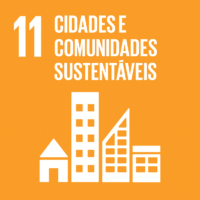Ciência-IUL
Publicações
Descrição Detalhada da Publicação
Raul Lino and the City
Título Revista
Preprints
Ano (publicação definitiva)
2019
Língua
Inglês
País
Suíça
Mais Informação
--
Web of Science®
Esta publicação não está indexada na Web of Science®
Scopus
Esta publicação não está indexada na Scopus
Google Scholar
Abstract/Resumo
Over a period of nearly one hundred years, Raul Lino da Silva (1879-1974) experienced the profound political, social and economic changes that marked the twentieth century in Portugal. Having been born during the Constitutional Monarchy (1822-1910), he lived through the First Republic (1910-1926), the Military Dictatorship (1926-1933) and the Second Republic, or Estado Novo (New State, 1933-1974), and died shortly after the Carnation Revolution of 25 April 1974, at the dawning of the Third Republic. Raul Lino was the architect who published the most in Portugal, having become known through his advocacy of the “Campanha da casa portuguesa” (“Portuguese house campaign”), which provoked a great deal of controversy among his peers. He is less known for the transversal quality of his synthesis between architecture, the decorative arts and territory, and its underlying affirmation of an idea of the city, which we conjecture from a diagonal reading of his theoretical and plastic narrative. We limit the analysis to the first half of the 20th century, concentrating on ten case studies, that encompass architectural projects, urbanistic plans and reports. The above expound the broad conception which he defended in the same year as was held the First National Architecture Congress (1948), whose proposals ratified in Portugal the orthodoxy established in 1933 by the International Congresses of Modern Architecture (CIAM). Quoting Aristotle Raul Lino conceived the city as the locus of happiness, shaping the possibilities of consensus between tradition and modernity by means of architecture, which is both envelope and stage for our collective existence. In fact, Raul Lino anticipated themes to be found in the narratives of authors like Aldo Rossi (1966), Paul Virilio (2004, 2009) or Peter Zumthor (2006), and his thought proves particularly relevant and timely in the present day.
Agradecimentos/Acknowledgements
--
Palavras-chave
Raul Lino,architecture,city,circumstance,modernity,continuity
Classificação Fields of Science and Technology
- Artes - Humanidades
Contribuições para os Objetivos do Desenvolvimento Sustentável das Nações Unidas
Com o objetivo de aumentar a investigação direcionada para o cumprimento dos Objetivos do Desenvolvimento Sustentável para 2030 das Nações Unidas, é disponibilizada no Ciência-IUL a possibilidade de associação, quando aplicável, dos artigos científicos aos Objetivos do Desenvolvimento Sustentável. Estes são os Objetivos do Desenvolvimento Sustentável identificados pelo(s) autor(es) para esta publicação. Para uma informação detalhada dos Objetivos do Desenvolvimento Sustentável, clique aqui.

 English
English

